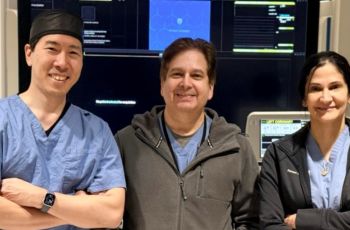
WASHINGTON (June 18, 2013) – A recently published paper by the George Washington University Cancer Institute (GWCI) addresses the value of patient navigation programs for community cancer centers.
The paper, titled “Community Cancer Center Administration and Support for Navigation Services,” was published in the journal, Seminars of Oncology Nurses. In the context of increasing financial constraints to the health care system, this paper offers an overview for community cancer centers seeking to assess their patient navigation program’s impact as a critical component of cancer care. This overview is a particularly important resource for nurses, as they often play a key role in working with administrators to define value metrics, track these measures, and report results.
The primary purpose of patient navigation is to eliminate barriers to timely care, ultimately improving health outcomes. In their experience with implementation and evaluation of patient navigation programs, authors Mandi Pratt-Chapman, M.A., associate director of community programs at GWCI, and Anne Willis, M.A., director of the division of cancer survivorship at GWCI, found that patient navigation can also provide significant value at the institutional level. .
“Patient navigation helps to mitigate some of the most troubling aspects of our health care system,” said Pratt-Chapman. “Not all individuals have benefited from advances in cancer care. Patient navigation provides critical support to patients who may not otherwise make it into or through cancer treatment We want to help others demonstrate the value of their patient navigation program to ensure patients continue to receive this much needed support.”
The paper cites examples of how patient navigation can help resolve barriers, such as communication hurdles, lack of information, and emotional challenges. It provides examples of how patient navigation can lead to improved service delivery and patient satisfaction. It also includes information on how community cancer centers can calculate return-on-investment for their patient navigation program, as well as information on the challenges to determining a program’s cost-effectiveness. The paper explains that the main benefits of a navigation program include: earlier diagnosis and improved treatment adherence, saving costs from no-show appointments, and patient retention.
“Patient navigation requires an initial investment,” said Willis, “but that investment can pay for itself many times over through improved patient outcomes and true cost savings to community cancer centers.”


